
Pachelbel’s Canon in D is a timeless composition, widely available as sheet music for various instruments. Popular arrangements include piano solo, string quartet, and jazz versions, with many free PDF downloads accessible online for musicians of all skill levels.
Overview of Pachelbel’s Canon in D
Johann Pachelbel’s Canon in D is a celebrated Baroque composition, renowned for its elegant structure and iconic chord progression. Originally written for strings and continuo, it features a repeating bass line with layered harmonies. The piece has gained immense popularity due to its timeless appeal and versatility, being adapted for various instruments. Sheet music arrangements are widely available, including versions for piano, string quartets, and even jazz interpretations. Its simplicity and beauty make it accessible to musicians of all skill levels, ensuring its enduring presence in classical and modern repertoire.
Importance of Sheet Music in Musical Performance
Sheet music is essential for accurately performing Pachelbel’s Canon in D, providing a clear guide for notes, dynamics, and tempo. It ensures consistency and precision, allowing musicians to interpret the composition faithfully. Available in PDF formats, sheet music caters to various skill levels, from easy piano arrangements to complex instrumental versions. It serves as a vital tool for rehearsals and performances, enabling musicians to master the piece’s iconic chord progressions and harmonies. Sheet music also helps preserve the composer’s intent, making it indispensable for both professional and amateur performers.
Popular Arrangements for Different Instruments
Pachelbel’s Canon in D is available in various sheet music arrangements, catering to diverse instrumental preferences. Piano solo versions, including easy arrangements, are highly popular, while string quartet adaptations remain a favorite for ensembles. Jazz and modern transcriptions, such as those by Hiromi Uehara, offer fresh interpretations. Arrangements for flute, violin, and guitar are also widely accessed. Additionally, vocal and choral adaptations provide opportunities for singers to engage with the piece. These arrangements ensure the composition’s timeless appeal, making it accessible to musicians across skill levels and genres.
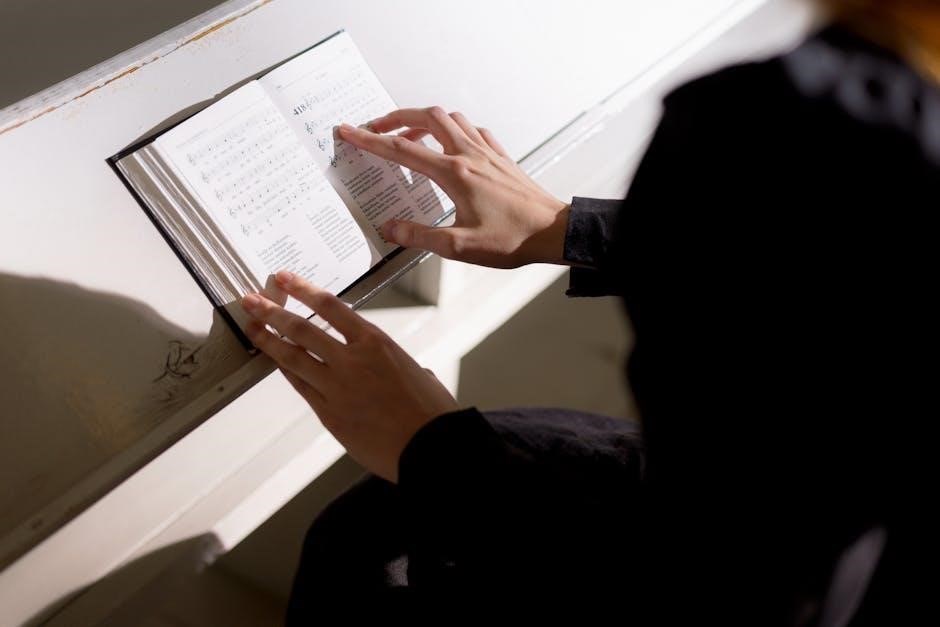
Background and History of Canon in D
Johann Pachelbel composed Canon in D around 1680. Originally for strings and basso continuo, it gained widespread popularity in the 20th century, becoming a beloved classical piece.
Johann Pachelbel and His Contributions to Music
Johann Pachelbel, a German Baroque composer, is renowned for his contributions to sacred and secular music. Known as the “father of the chorale prelude,” he advanced organ music and fugue techniques. His compositions, including Canon in D, showcased innovative harmonic progressions. Pachelbel also wrote chamber music and taught influential composers. His work laid the groundwork for later masters like Johann Sebastian Bach. Despite his prominence, his fame rose posthumously, with Canon in D becoming a cultural icon.
Historical Context of the Composition
Pachelbel’s Canon in D was composed during the Baroque era, around 1680–1690. Originally written for strings and continuo, it reflects the period’s harmonic and structural conventions. The piece was likely performed during religious services or ceremonies. Despite its beauty, it remained relatively unknown until the 20th century, when it gained widespread popularity. Its resurgence is tied to the Baroque music revival and its adoption in weddings and media. Today, it is a cultural phenomenon, symbolizing celebration and timeless elegance, far beyond its original liturgical purpose.
Evolution of Canon in D Over the Years
Pachelbel’s Canon in D, composed in the late 17th century, was initially performed with strings and continuo. Over centuries, it evolved through various arrangements for instruments like piano, guitar, and even jazz ensembles. The 20th-century revival popularized it for weddings and commercials. Today, digital adaptations and social media have further amplified its reach, inspiring modern remixes and covers. Despite these changes, the piece retains its original harmonic structure, blending tradition with innovation to remain a timeless classic.
Structure and Composition of Canon in D
The Canon in D is a Baroque composition based on a ground bass, featuring a repeating harmonic structure. Its 4/4 time signature supports eight variations, each adding complexity. The piece is scored for three violins and a bass, with chord progressions that create a simple yet enduring harmonic framework, making it a cornerstone of Baroque music.
Musical Elements and Chord Progressions

Pachelbel’s Canon in D features a iconic chord progression (I-V-vi-iii-IV-I) that repeats with variations. The piece is in 4/4 time, with a ground bass pattern in the bass line. Its harmonic structure is tonal and diatonic, creating a sense of stability and resolution. The composition relies on counterpoint, with interweaving melodic lines that complement the chordal harmony. This blend of simplicity and complexity has made the piece timeless, allowing it to adapt to various arrangements while retaining its core musical identity.
Role of Counterpoint in the Composition
Counterpoint is a foundational element in Pachelbel’s Canon in D, where interweaving melodies create harmonic richness. The composition features a basso ostinato, a recurring bass line, over which upper voices play contrasting yet complementary melodies. This contrapuntal technique builds complexity and depth, while maintaining balance. Each voice is independent yet harmonically aligned, showcasing Baroque-era compositional mastery. The counterpoint enhances the piece’s emotional resonance and structural integrity, making it a beloved study subject for musicians and theorists alike.
Analysis of the Score and Notation
The score of Pachelbel’s Canon in D reveals a meticulously structured composition. Notated in D major with a common time signature, it features a prominent basso ostinato, a recurring bass line that underpins the piece. The canon form is evident through layered melodic entries, each staggered to create harmonic depth. Dynamics and articulations guide expression, with slurs and legatos enhancing the lyrical flow. The notation clarity aids performers in interpreting the Baroque-era techniques, essential for authentic rendition. This analysis underscores the piece’s enduring appeal and educational value for musicians.
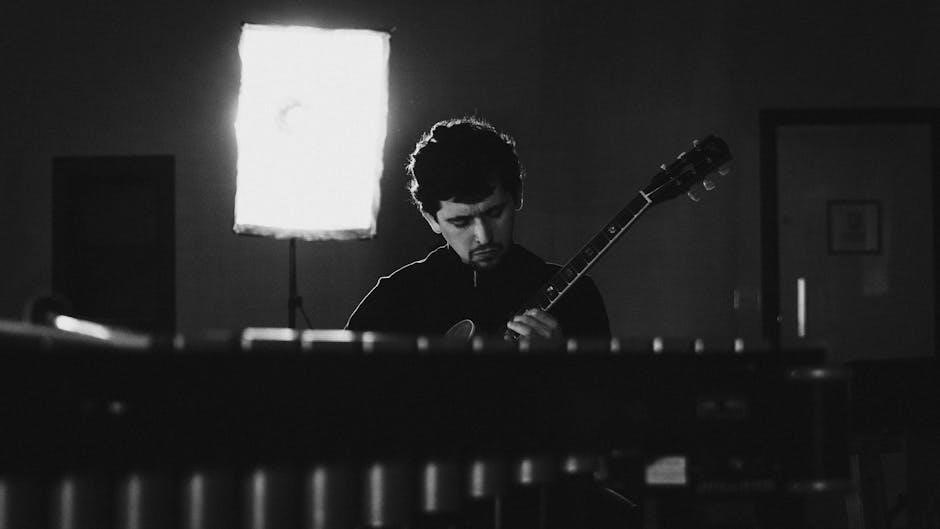
Significance of Canon in D in Music
Pachelbel’s Canon in D holds a timeless appeal, celebrated for its serene beauty and structural brilliance. Its universal popularity spans genres, inspiring countless adaptations and cementing its place as a cornerstone of classical music, while its emotional resonance connects with audiences worldwide, making it a cherished and enduring piece in musical history.
Cultural Impact and Popularity
Pachelbel’s Canon in D has become a cultural phenomenon, transcending classical music boundaries. Its serene and uplifting melody resonates universally, making it a staple at weddings, films, and commercials. The piece’s timeless appeal lies in its simplicity and emotional depth, allowing it to connect with diverse audiences. Its popularity has led to numerous adaptations, from orchestral arrangements to modern remixes, ensuring its relevance across generations. As a result, it remains one of the most recognizable and beloved classical compositions in the world, bridging the gap between traditional and contemporary music.
Use in Weddings and Ceremonial Events
Pachelbel’s Canon in D is a timeless favorite for weddings and ceremonial events due to its serene and romantic qualities. Often performed during processions or ceremonies, its harmonious structure creates a memorable atmosphere. The piece is frequently arranged for string quartets, pianists, or orchestras, making it versatile for various event settings. Its emotional depth and elegance have solidified its place as a classic choice for celebrating life’s most meaningful moments, ensuring its enduring popularity in both traditional and modern celebrations.
Influence on Classical and Modern Music
Pachelbel’s Canon in D has profoundly influenced both classical and modern music; Its iconic chord progression has been adapted by countless composers and artists, inspiring works across genres. In classical music, it laid the groundwork for baroque counterpoint techniques. In modern times, its harmonic structure has been sampled in pop, rock, and electronic tracks, showcasing its timeless appeal. This piece bridges eras, remaining a cornerstone of musical inspiration, demonstrating its enduring relevance and universal appeal across diverse musical styles and generations.
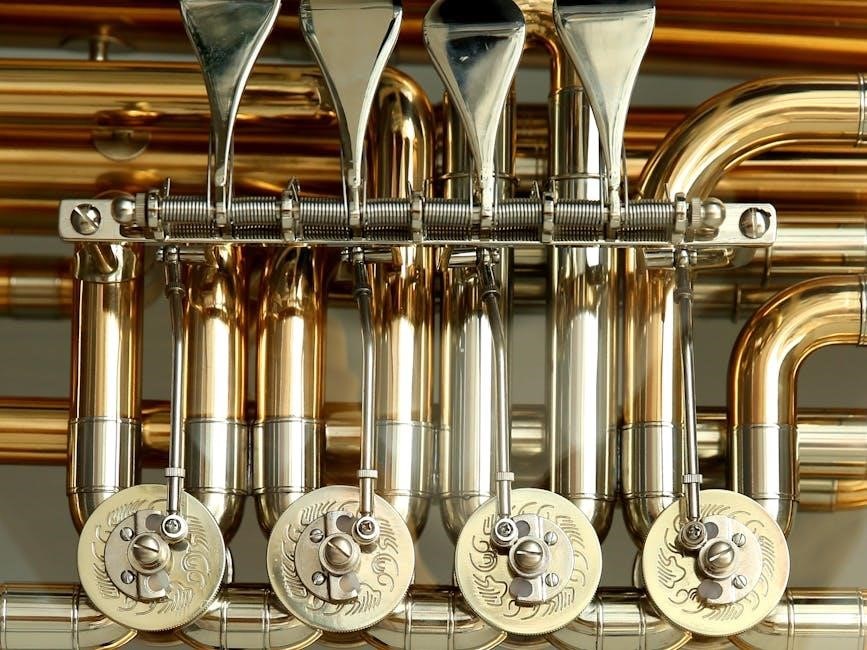
Sheet Music Arrangements for Canon in D
Pachelbel’s Canon in D is available in diverse arrangements, including piano solo, string quartet, and jazz transcriptions, catering to various skill levels and musical preferences.
Piano Solo Arrangements
Pachelbel’s Canon in D is beautifully adapted for piano solo, offering a serene and elegant interpretation. These arrangements maintain the piece’s iconic chord progression and harmonic structure while simplifying it for solo performance. Many versions cater to pianists of varying skill levels, from beginners to advanced players. The solo piano arrangement emphasizes the melody’s emotional depth and the rhythmic interplay of the arpeggio patterns. It’s a popular choice for weddings, recitals, and personal practice. PDF sheet music for piano solo is widely available, providing clear notation for dynamics, tempo, and phrasing.
String Quartet Arrangements
Canon in D is stunningly arranged for string quartet, showcasing the piece’s harmonic richness. The interplay between violins, viola, and cello brings depth and texture, preserving Pachelbel’s original intent. These arrangements are popular for weddings and formal events, offering a timeless sound. Many string quartet versions remain faithful to the original composition while allowing for expressive interpretation. PDF sheet music for string quartet is widely available, providing detailed notation for each instrument, ensuring a balanced and cohesive performance.
Jazz and Modern Transcriptions
Jazz and modern transcriptions of Canon in D offer fresh interpretations, blending Pachelbel’s timeless chords with contemporary styles. These arrangements often feature improvisational elements, syncopated rhythms, and harmonic extensions, making the piece appealing to diverse audiences. Modern transcriptions may incorporate electronic beats, orchestral layers, or experimental instrumentation while maintaining the core structure. Jazz versions highlight the versatility of the composition, transforming it into a vibrant, dynamic experience. PDF sheet music for these arrangements is widely available, allowing musicians to explore new creative directions while honoring the original masterpiece.
Vocal and Choral Adaptations
Vocal and choral adaptations of Canon in D bring a unique dimension to the piece, transforming it into a harmonious blend of voices. These arrangements often feature intricate harmonies and layered melodies, showcasing the versatility of Pachelbel’s composition. Choirs and vocal ensembles worldwide perform these adaptations, which are particularly popular in weddings and religious ceremonies. The sheet music for vocal versions is widely available, offering arrangements for both small ensembles and large choirs. These adaptations highlight the timeless appeal of Canon in D, bridging classical and contemporary vocal music.
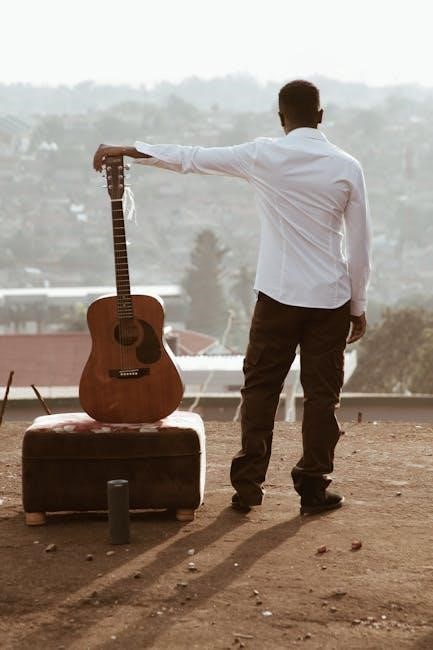
Performance Considerations for Canon in D
Performance considerations for Canon in D involve careful attention to tempo, dynamics, and instrumentation. Musicians must balance the iconic bass line with harmonized layers, ensuring clarity and cohesion. Proper articulation and phrasing are essential, while respecting the piece’s baroque origins. Performers should also consider the acoustic setting and audience context, such as weddings or ceremonies, where the music is frequently featured. Practicing with a metronome and focusing on ensemble synchronization is highly recommended to master the piece effectively.
Tempo and Dynamics
The tempo for Canon in D is typically moderate, often around 100 BPM, but can vary depending on the arrangement. Dynamics play a crucial role, starting softly and building gradually. Musicians should emphasize phrasing and subtle rubato to enhance expressiveness. The piece is usually in common time, with a steady rhythm that supports its iconic bass line. Balancing dynamics ensures the interplay between melody and harmony remains clear. Proper attention to tempo and dynamics brings out the piece’s emotional depth and structural elegance, making it a timeless favorite for performers and audiences alike.
Instrumentation and Harmonization
Canon in D was originally written for strings and continuo, featuring a iconic bass line that underpins the composition. The interweaving of melodies creates a rich harmonic texture, with each voice building on the previous one. Modern arrangements often adapt the piece for various instruments, maintaining its signature counterpoint. The harmonization relies on a repetitive yet evolving chord progression, making it versatile for ensembles or solo performances. The balance of instrumentation and harmonization ensures the piece remains both timeless and adaptable, appealing to a wide range of musical interpretations and settings.
Practice Tips for Musicians
Mastering Canon in D requires focused practice. Start by breaking the piece into sections, practicing each melody line separately before combining them. Pay attention to tempo consistency, as the steady rhythm is key to its harmony. Use a metronome to maintain accuracy. Dynamics should be emphasized to enhance the emotional depth. Practice with a piano accompaniment initially, then transition to ensemble playing. Gradually increase tempo as confidence grows. Regular practice will build familiarity and confidence, ensuring a polished performance of this beloved composition.

Educational Resources and Tutorials
Online tutorials, video lessons, and music theory guides offer step-by-step instruction for mastering Canon in D. These resources help musicians understand chord progressions, counterpoint, and performance techniques effectively.
Online Tutorials and Video Lessons
Online tutorials and video lessons provide interactive learning experiences for mastering Canon in D. Platforms like YouTube and dedicated music websites offer step-by-step guides, covering chord progressions, counterpoint techniques, and performance tips. Many tutorials include downloadable PDF sheet music, allowing musicians to practice alongside visual demonstrations. These resources cater to all skill levels, from beginners to advanced players, ensuring a comprehensive understanding of the piece. They also often feature breakdowns of specific sections, making it easier to refine difficult passages and improve overall musicianship.
Music Theory Guides
Music theory guides are essential for understanding the composition of Canon in D. These resources delve into the piece’s harmonic structure, chord progressions, and counterpoint techniques. By analyzing the score, musicians can grasp the recurring bassline (basso ostinato) and how it supports the harmonic framework. Theory guides also explore the use of ground bass and canon forms, providing insights into Pachelbel’s innovative approach. They are invaluable for musicians aiming to interpret and perform the piece accurately, while appreciating its timeless appeal and structural brilliance.
Interactive Sheet Music Tools
Interactive sheet music tools enhance the learning and performance of Canon in D. These tools allow musicians to adjust tempo, transpose keys, and even edit arrangements. Many platforms offer playback features, enabling users to hear the music while following the score. Collaborative tools also let multiple users work on the same piece simultaneously. For educators, these tools provide a dynamic way to teach complex compositions. They make Canon in D more accessible and engaging for musicians of all skill levels, fostering creativity and precision in performance.

Famous Performances and Recordings
Famous performances of Canon in D highlight its timeless appeal. Notable artists have interpreted the piece in various styles, from classical orchestras to modern instrumental arrangements. Performances often feature intricate harmonies and emotional depth, showcasing the composition’s versatility. Many recordings, including piano, string quartet, and guitar versions, have gained global recognition. Live concerts frequently include Canon in D, demonstrating its enduring popularity across generations and musical genres. Its elegance continues to captivate audiences worldwide, making it a staple in classical and contemporary music.
Notable Artists and Their Interpretations
Canon in D has been performed by renowned artists worldwide, each bringing unique interpretations. The London Symphony Orchestra’s rendition is celebrated for its grandeur, while Brian Eno’s ambient version offers a modern twist. James Blackshaw’s guitar arrangement highlights the piece’s melodic simplicity. Lang Lang’s piano interpretation adds emotional depth, and George Winston’s solo piano version blends classical with contemporary styles. These artists demonstrate the versatility of Pachelbel’s composition, making it accessible to diverse audiences and genres. Their interpretations showcase the timeless appeal of Canon in D.
Live Performances and Concerts
Canon in D shines brilliantly in live performances, captivating audiences worldwide. Classical ensembles often feature it in orchestral concerts, where its layered harmonies resonate powerfully. Chamber music groups, such as string quartets, deliver intimate renditions that highlight the piece’s emotional depth. Many musicians incorporate it into wedding ceremonies, creating a serene atmosphere. Additionally, live performances in historic venues amplify its grandeur, making it a staple in classical music events. The piece’s versatility ensures it remains a crowd favorite, bridging traditional and contemporary settings with elegance.
Modern Covers and Remixes
Pachelbel’s Canon in D has inspired countless modern covers and remixes, breathing new life into the classic composition. Electronic dance music (EDM) versions energize the piece with pulsating beats, while piano covers offer serene reinterpretations. Orchestral arrangements and jazz improvisations further showcase its versatility. Rock bands have also adapted it, infusing it with dynamic energy. These modern renditions not only introduce the piece to new audiences but also demonstrate its timeless appeal. Aspiring musicians can explore these interpretations through widely available sheet music PDFs, making it accessible to learners of all levels.

Downloading and Accessing Canon in D Sheet Music
Canon in D sheet music PDFs are widely available on platforms like Musicnotes, Sheet Music Plus, and MuseScore. Both free and premium versions are accessible, catering to various skill levels and instrumentation needs.
Free PDF Downloads and Websites
Websites like MuseScore, IMSLP, and 8Notes offer free PDF downloads of Canon in D sheet music. These platforms provide arrangements for various instruments, from piano to string quartets. Many versions are available for beginners, while others cater to advanced musicians. Some sites may require registration, but the downloads are typically free of charge. Be sure to review the licensing terms to ensure proper use and attribution. These resources are invaluable for musicians seeking affordable access to this timeless piece.
Premium Sheet Music Services
Premium platforms like Musicnotes, Sheet Music Plus, and others offer high-quality Canon in D sheet music PDFs. These services provide professionally arranged scores with precise notation and formatting. They cater to various skill levels and instruments, ensuring accuracy and clarity. Many premium sites offer customizable options, such as transposition or specific instrumental parts. While these require payment, they ensure superior quality and reliability, making them ideal for serious musicians seeking polished and professional arrangements of Pachelbel’s beloved composition.
Legal and Copyright Considerations
When accessing Canon in D sheet music PDFs, it’s essential to consider copyright laws. While Pachelbel’s original composition is in the public domain, specific arrangements and transcriptions may be copyrighted. Users must ensure they have the legal right to use or perform the music, especially for commercial purposes. Always verify the source and licensing terms to avoid infringement. Purchasing from reputable platforms or obtaining proper licenses is recommended to comply with copyright regulations and support creators.
Pachelbel’s Canon in D remains a timeless masterpiece, inspiring musicians globally with its serene beauty and versatility. Its enduring popularity ensures its continued influence in music, motivating aspiring artists to explore its depths and adapt it to new forms, securing its place in both classical and modern repertoires for generations to come.
Legacy of Canon in D
Pachelbel’s Canon in D has etched an indelible mark on music history, celebrated for its timeless elegance and emotional resonance. Its universal appeal transcends genres, inspiring countless adaptations and interpretations. As a foundational piece in classical music education, it continues to nurture new generations of musicians and composers. The sheet music remains a cherished resource, ensuring its enduring presence in performances and cultural celebrations worldwide. Its legacy is a testament to the power of music to unite and inspire across centuries.
Encouragement for Aspiring Musicians
Pachelbel’s Canon in D serves as a powerful inspiration for aspiring musicians, showcasing the beauty of classical music. Its timeless appeal reminds us that masterpieces endure, offering endless opportunities for interpretation. Studying the sheet music encourages technical growth and emotional expression. Whether playing it on piano, strings, or other instruments, this piece invites musicians to connect with its harmonic richness. Embrace the challenge and let Canon in D be a stepping stone to refining your craft and exploring the depths of musical artistry.
Future of the Piece in Modern Music
Pachelbel’s Canon in D continues to evolve in modern music, with its timeless chord progressions inspiring new arrangements and fusions. Its versatility allows it to seamlessly blend into pop, electronic, and film scores, ensuring its relevance in contemporary culture. Digital platforms and sheet music tools make it accessible for new generations to reinterpret the piece. As music evolves, Canon in D remains a bridge between classical traditions and innovative creativity, guaranteeing its enduring presence in the musical landscape.
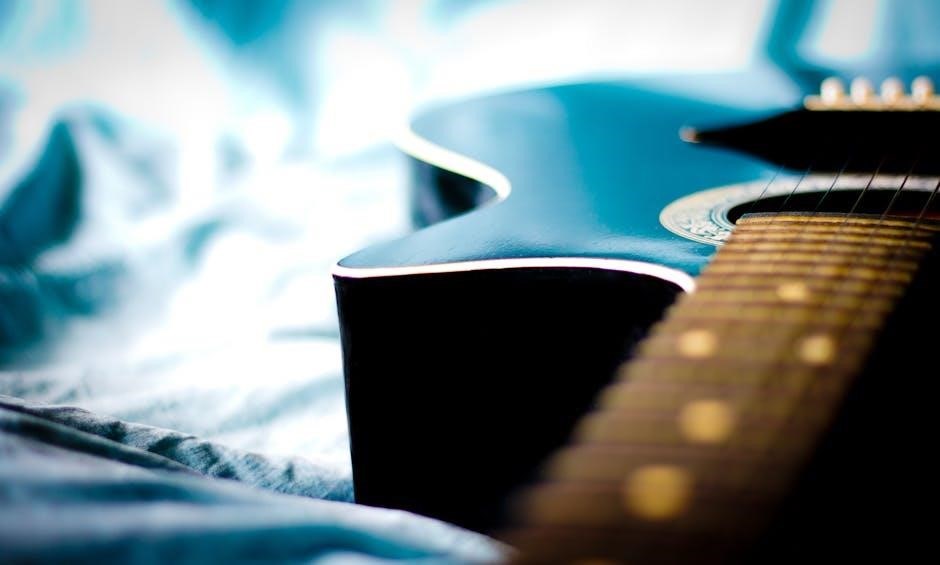
Additional Resources and References
Explore reputable sheet music platforms, music theory books, and online forums for deeper insights into Canon in D. Utilize interactive tools and tutorials for enhanced learning.
Recommended Sheet Music Platforms
For high-quality Canon in D sheet music PDFs, explore platforms like Musicnotes, Sheet Music Plus, and MuseScore. These sites offer a wide range of arrangements, from solo instruments to ensemble scores. Many provide free downloads, while others offer premium, professionally arranged versions. Ensure you choose platforms with clear, printable formats and accurate transcriptions. These resources are ideal for musicians seeking reliable sheet music for practice or performance. Always verify the legality and quality of the downloads before purchasing or printing.
Books and eBooks on Pachelbel
Exploring books and eBooks about Johann Pachelbel provides a deeper understanding of his life and contributions to music. Titles like Pachelbel’s Canon: The Story Behind the Music and Johann Pachelbel: A Composer’s Life and Legacy offer insights into his career and cultural impact. These resources are available on platforms like Amazon Kindle and Google Books; For musicians, analytical studies of his compositions, including Canon in D, are invaluable for gaining musical and historical context.
Communities and Forums for Discussion
Engaging with online communities and forums can enhance your understanding and appreciation of Canon in D. Platforms like Reddit (e.g., r/sheetmusic) and Facebook Groups (e.g., “Sheet Music Enthusiasts”) offer spaces to discuss interpretations, share resources, and connect with fellow musicians. These forums often include discussions about Canon in D sheet music PDF arrangements, performance tips, and historical insights. They also provide opportunities to collaborate and learn from others passionate about Pachelbel’s work.


